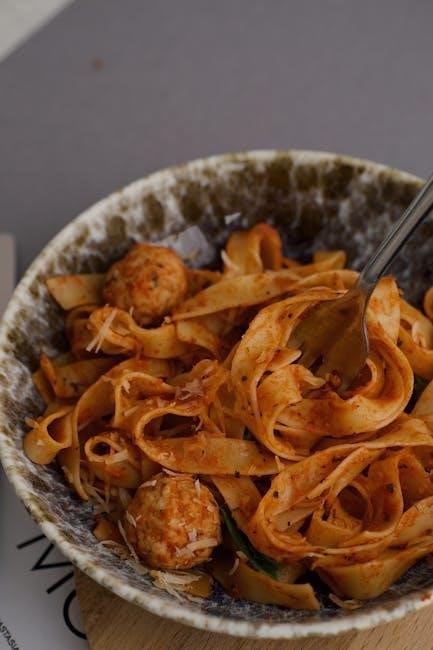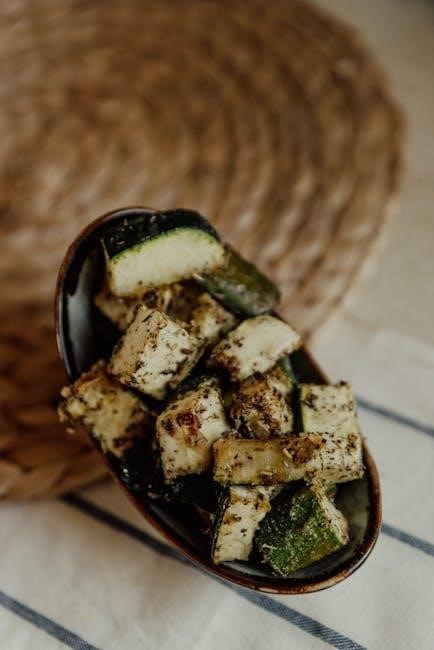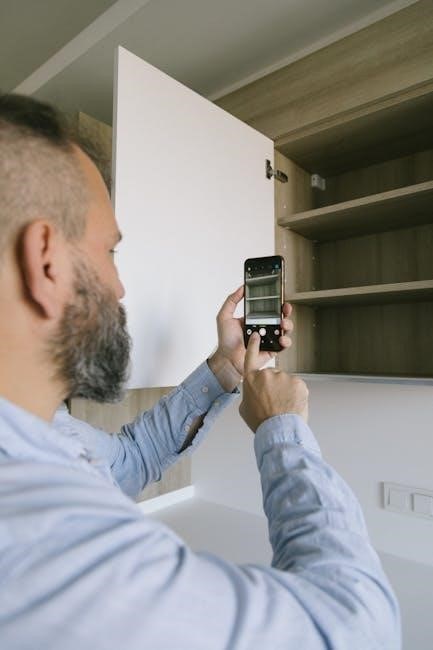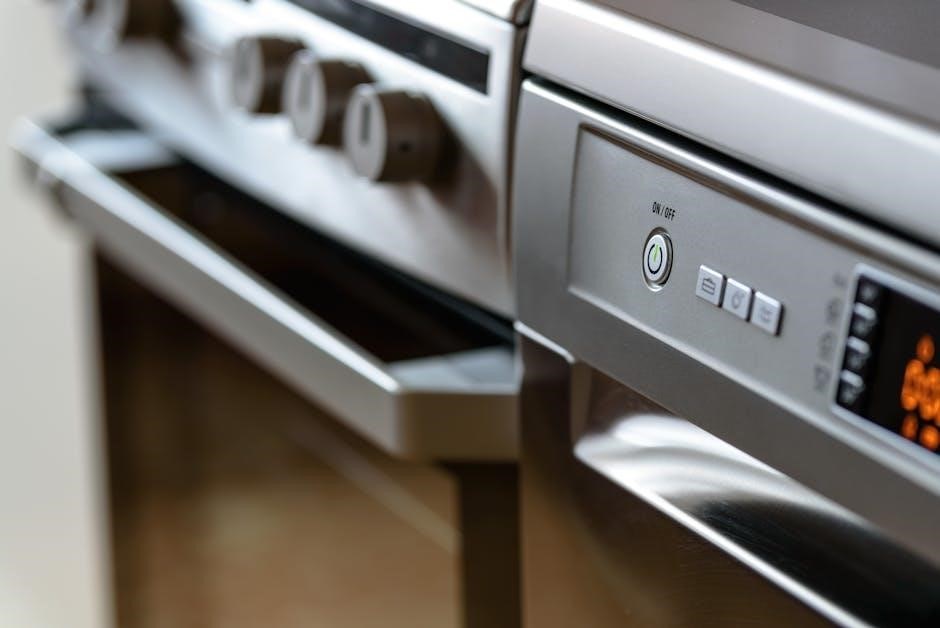Recognizing weeds is crucial for effective garden management. A detailed catalog of weeds with photos serves as an essential tool for quick identification, understanding life cycles, and applying appropriate control methods. This visual guide helps gardeners and farmers combat invasive species efficiently, ensuring healthier plant growth and ecosystem balance.
Download the comprehensive weed identification PDF for a detailed overview of common species and their management strategies.
1.1. Definition and Importance of Weed Identification
Weed identification is the process of recognizing and classifying unwanted plants that compete with crops or desirable vegetation. Accurate identification is critical for effective management, as it allows for targeted control methods. Weeds can outcompete native plants, reduce agricultural yields, and harm ecosystems. Understanding their characteristics, growth habits, and life cycles is essential for developing strategies to prevent their spread. A comprehensive list of weeds with photos serves as a valuable resource, enabling quick and precise recognition. Early detection and proper identification are key to preventing infestations and protecting biodiversity. This knowledge also aids in selecting appropriate control measures, ensuring efficient use of resources and minimizing environmental impact.
Visual guides, such as a weed identification PDF, provide detailed images and descriptions, making identification more accessible for gardeners and professionals alike. These tools are indispensable for maintaining healthy gardens, farms, and natural spaces.
1.2. Why Photos Are Essential for Weed Recognition
Photos are indispensable for accurate weed identification, as they provide clear visual cues about plant characteristics. Unlike written descriptions, images capture intricate details such as leaf shapes, flower colors, and growth patterns. This visual clarity helps distinguish similar species and reduces misidentification. High-quality photos also reveal subtle features like seed formation and stem textures, which are critical for precise recognition. For non-experts, images simplify the process, making it accessible to gardeners and farmers. A weed identification guide with photos ensures that users can quickly match unknown plants to known species. This visual aid is especially valuable for early detection, enabling timely control measures to prevent infestations. Ultimately, photos bridge the gap between technical descriptions and practical application, making weed management more effective and efficient.
Download a detailed weed identification PDF for a visual reference to common species.
Biology of Weeds
Understanding weed biology is key to effective management. Weeds exhibit diverse life cycles, rapid growth, and robust reproduction mechanisms, enabling them to thrive in various environments and outcompete native plants.
2.1. Life Cycles of Common Weeds
Weeds exhibit varied life cycles, from annual to perennial. Annual weeds complete their life cycle within a year, germinating, flowering, and seeding quickly. Biennials take two years, storing energy in their first year and flowering in the second. Perennials, like Japanese knotweed, survive multiple years through extensive root systems. Understanding these cycles is crucial for effective control, as targeting plants during their seedling stage often prevents propagation. Photos in identification guides highlight growth stages, aiding in timely intervention for gardeners and farmers aiming to suppress weed populations.
2.2. Growth Patterns and Spread Mechanisms
Weeds exhibit aggressive growth patterns and spread rapidly through various mechanisms. Japanese knotweed spreads via rhizomes, forming dense colonies, while ragweed relies on wind-dispersed seeds. Dandelions use parachuted seeds for wide dispersal, ensuring quick colonization. Nettles and ground elder spread through underground roots and stolons, respectively, allowing them to dominate soil spaces. These mechanisms enable weeds to outcompete native plants, making them challenging to control. Understanding their growth habits is essential for devising targeted strategies to limit their proliferation and protect desired vegetation. Photos in identification guides often highlight these patterns, aiding in early detection and management of invasive species.

Identification of Common Weeds
This section provides a detailed guide to identifying invasive weeds, including Japanese Knotweed, Ragweed, Dandelion, Nettles, and Ground Elder. Visual aids like photos and descriptions help recognize these species, ensuring accurate detection and management.
3.1. Renouée du Japon (Japanese Knotweed)
Japanese Knotweed is one of the most invasive weeds worldwide. It is characterized by its rapid growth and reddish-brown coloring, often forming dense stands that outcompete native vegetation. Identification is key, as its bamboo-like stems and heart-shaped leaves can be misleading. This weed spreads aggressively through rhizomes, making it challenging to control; Early detection is crucial to prevent widespread infestation. Manual removal requires careful digging to ensure all root fragments are eliminated, as even small pieces can regenerate. Regular monitoring and persistent effort are essential for effective management. In severe cases, professional assistance may be necessary to fully eradicate this persistent invasive species.
3.2. Lambroisie ( Ragweed )
3.2. Lambroisie (Ragweed)

Ragweed, known for its highly allergenic pollen, is a common and troublesome weed. It grows rapidly, producing small, yellowish-green flowers that release copious amounts of allergens. Identification is crucial, as its inconspicuous appearance often leads to underestimated impacts. Ragweed thrives in disturbed soils and spreads efficiently via wind-borne seeds, making it a persistent invader in gardens and agricultural fields. Control methods include manual removal of young plants and applying thick layers of organic mulch to block sunlight and prevent germination. Regular monitoring is essential, as ragweed can quickly colonize areas left unattended. Its ability to outcompete native vegetation and harm human health makes it a priority target for eradication efforts.
3.3. Pissenlit (Dandelion)
Dandelion, a widespread weed, is easily recognizable by its bright yellow flowers and feathery seeds that disperse widely in the wind. It thrives in lawns, meadows, and disturbed areas, growing from a deep taproot that makes it challenging to eradicate. The plant’s leaves are jagged and toothed, often growing in a rosette pattern. Dandelions can outcompete desirable plants for nutrients and water, making them a common nuisance. Effective control involves manual removal, ensuring the entire root is extracted to prevent regrowth. Regular lawn maintenance, such as mowing and fertilizing, can also help suppress dandelion growth by promoting a healthy, dense turf. Wear gloves when handling to avoid skin irritation from the milky sap.

3.4. Orties (Nettles)
Nettles are herbaceous plants known for their stinging leaves, which cause skin irritation due to the presence of urtic acid. They belong to the Urticaceae family and are commonly found in gardens, meadows, and along roadsides. The leaves are pointed, serrated, and covered with fine hairs that release irritating substances upon contact. Nettles grow in dense clusters and can spread quickly through underground rhizomes. To remove them, wear gloves and pull the entire plant, including the roots, to prevent regrowth. Regular mowing or applying mulch can suppress their growth. Interestingly, nettles are also valued for their medicinal properties and as a natural fertilizer when processed properly.
3.5. Égopode (Ground Elder)
The Ground Elder (Aegopodium podagraria) is a highly invasive perennial weed belonging to the Apiaceae family. It is recognized by its triangular, dark green leaves and clusters of small, white flowers in late spring. This plant spreads aggressively through underground rhizomes, forming dense colonies that outcompete other vegetation. Its deep-rooted system makes manual removal challenging, as even small root fragments can regenerate into new plants. Regular monitoring and persistent efforts are essential to control its spread.
Prevention methods include regular mowing, solarization, or applying thick organic mulch to block light. Despite its nuisance, Ground Elder has historically been used in folk medicine and as a food source. Its persistence and adaptability make it a formidable weed in gardens and natural areas.

Prevention and Control Methods
Prevention is key to managing weeds effectively. Regular garden maintenance, organic mulching, and chemical control are essential strategies. Learn more.
4.1. Manual Removal Techniques

Manual removal is an effective method for controlling weeds, especially in small infestations. It involves physically pulling or digging up the entire plant, including roots, to prevent regrowth. For species like Japanese Knotweed, Ragweed, and Dandelion, ensure the root system is fully removed. Tools like gloves, hand trowels, or weeding forks can aid in this process. Regularly maintaining the garden and removing weeds before they seed can significantly reduce their spread. This method is eco-friendly and avoids chemical use, making it ideal for organic gardening. Download the guide for detailed techniques.
4.2. Mechanical Control Methods
Mechanical control methods are highly effective for managing weeds over larger areas. Techniques include mowing, tillage, and using tools like weed whackers or hoeing machines. For persistent species such as Ground Elder or Nettles, regular mowing can prevent flowering and seed dispersal. Tools like tillers break up soil and remove root systems, while scarifying lawns helps eliminate deep-rooted weeds. These methods are particularly useful for gardens and agricultural fields, offering a scalable solution to weed management. Download the guide for more insights on mechanical strategies.
4.3. Organic Barriers and Mulching
Organic barriers and mulching are eco-friendly methods to suppress weed growth. Applying a thick layer of mulch, such as wood chips or bark, blocks sunlight, preventing germination. Regularly replenishing mulch ensures long-term weed control. Landscaping fabric is another effective barrier, allowing water and air to reach plants while inhibiting weeds. Install fabric before mulching for optimal results. Additionally, natural compost or straw mulch can enhance soil health while deterring weeds. These methods are ideal for gardeners seeking sustainable, chemical-free solutions. For detailed guidance, refer to the weed control PDF guide, which includes step-by-step techniques and material recommendations.
4.4. Chemical Control Options
Chemical herbicides are a common solution for managing weeds, especially in large areas. Selective herbicides target specific weed species without harming desirable plants, while non-selective options eliminate all vegetation. Pre-emergent herbicides prevent weed seeds from germinating, providing long-term control. Application timing is crucial; weeds are most vulnerable during active growth phases. Always follow product instructions to ensure safety and effectiveness. For persistent species like Japanese knotweed, systemic herbicides may be necessary. Environmental considerations and local regulations should guide chemical use. Consult the weed control guide for recommended products and application methods tailored to your needs.

Beneficial Uses of Weeds
Certain weeds, like dandelions and nettles, offer culinary and medicinal value. They can be composted, serve as wildlife food, or used in herbal remedies, adding practical benefits to gardening efforts.

Explore the full guide to discover how to repurpose these plants effectively.
5.1. Weeds as Compost Material

Weeds can be a valuable addition to compost piles. Adding weed leaves and stems accelerates decomposition, enriching the soil with nutrients. Ensure to remove seed heads to prevent regrowth. Young, tender weeds break down faster than woody stems, creating a nutrient-rich soil amendment. This eco-friendly method reduces waste and enhances soil health, benefiting garden plants. Learn more about composting techniques in the comprehensive guide for sustainable gardening practices.
5.2. Medicinal Properties of Certain Weeds
Certain weeds possess medicinal properties, offering natural remedies for various ailments. Dandelion roots and leaves are used in teas and tinctures to support liver health. Nettles are rich in antioxidants and can be consumed as infusions to alleviate arthritis symptoms. Plantain leaves are known for their anti-inflammatory properties, often used in topical treatments. While these plants are considered invasive, they provide valuable health benefits when used appropriately. Explore more about their uses in the detailed guide to harness their potential safely and effectively.
5.3. Weeds as a Food Source for Wildlife
Weeds play a vital role as a food source for various wildlife species. Dandelions, for instance, provide nectar for pollinators like bees and butterflies. Nettles are a crucial food source for caterpillars of butterflies, such as the peacock butterfly. Japanese knotweed, though invasive, offers berries that attract birds. Many weeds produce seeds that sustain birds and small mammals during winter. By understanding the ecological value of these plants, gardeners can create wildlife-friendly habitats. Explore the visual guide to identify and manage weeds that support local biodiversity and wildlife nutrition effectively.
Regional Variations in Weed Species
Weed species vary significantly across regions due to climate, soil, and environmental conditions. In France, species like Japanese Knotweed and Ragweed dominate, while other European countries host different prevalent weeds. Explore the visual guide to identify region-specific weeds and understand their distribution patterns.
6.1. Common Weeds in France
France is home to a variety of invasive and persistent weed species that impact gardens and agricultural lands. Among the most common are Japanese Knotweed, Ragweed, Dandelion, Nettles, and Ground Elder. These species thrive in France’s temperate climate and can outcompete native plants. Download the detailed guide to explore their identification features and control methods. Regular garden maintenance and preventive measures are essential to manage these weeds effectively, ensuring healthy plant growth and ecosystem balance.
6.2. Weed Species in Other European Countries
Across Europe, various weed species dominate different regions due to diverse climates and soil conditions. In the UK, Buddleja and Himalayan Balsam are invasive, while Germany faces issues with Canadian Goldenrod; Italy struggles with Amorpha fruticosa, and Spain with Nicotiana glauca. These species often spread rapidly, disrupting local ecosystems. A comprehensive photo guide helps identify and manage these weeds. Understanding regional variations is key to effective control, ensuring biodiversity and agricultural productivity across Europe.
Cultural and Historical Significance
Weeds have played roles in folk medicine and as soil quality indicators. Many species, like dandelions and nettles, are valued for their medicinal and culinary uses, highlighting their cultural importance across history.
7.1. Weeds in Folk Medicine
Many common weeds have been used in folk medicine for centuries, offering natural remedies for various ailments. Dandelion roots and leaves, for instance, are known for their digestive benefits and diuretic properties. Nettles have been used to treat skin conditions and allergies, while Japanese Knotweed is valued for its anti-inflammatory properties. Ragweed, despite its allergenic pollen, has been used in traditional remedies for fever and rheumatism. These plants, often dismissed as pests, hold significant medicinal value and have been integral to traditional healing practices across cultures.
- Taraxacum officinale (Dandelion): Used for digestive issues and liver support.
- Urtica dioica (Nettle): Utilized for skin health and anti-inflammatory purposes.
- Fallopia japonica (Japanese Knotweed): Known for its antioxidant and anti-inflammatory properties.
- Ambrosia artemisiifolia (Ragweed): Employed in traditional remedies despite its allergenic nature;
- Aegopodium podagraria (Ground Elder): Used to treat joint pain and digestive disorders.

These examples highlight the dual role of weeds as both nuisance plants and valuable medicinal resources, underscoring their importance in traditional medicine.
7.2. Weeds as Indicators of Soil Quality
Weeds often serve as natural indicators of soil conditions, reflecting the health and composition of the ground. Certain species thrive in specific soil types, making them valuable for assessing land quality. For example, dandelions often grow in well-aerated soils, while nettles prefer nitrogen-rich areas. The presence of Japanese knotweed may signal disturbed or nutrient-poor soil, and ragweed often indicates areas with low organic matter. By identifying these weeds, landowners can gain insights into soil fertility, drainage, and pH levels. This natural feedback loop helps guide agricultural and gardening practices, ensuring more sustainable land management. Weeds, in this sense, act as silent sentinels for soil health, providing clues for improvement.
8.1. Recap of Key Identification Features
Identifying weeds accurately is essential for effective management. Key features include distinct leaf shapes, growth patterns, and flowering characteristics. For example, Japanese Knotweed has reddish-brown stems and spear-shaped leaves, while Ragweed is recognized by its allergenic pollen and fern-like foliage. Dandelion is notable for its bright yellow flowers and toothed leaves, and Nettles are identified by their stinging, serrated leaves. Ground Elder features triangular leaves and clusters of small white flowers. Using detailed photos and descriptions from resources like the weed identification PDF, gardeners can efficiently recognize and address invasive species, ensuring timely control measures.
8.2. Effective Management Strategies
Combating weeds effectively requires a combination of prevention, manual, and chemical methods. Regular garden maintenance, such as mulching and tilling, prevents seed germination. For invasive species like Japanese Knotweed, complete root removal is essential. Ragweed can be controlled by removing seedlings before flowering and applying organic barriers. Dandelions and Nettles benefit from manual pulling, ensuring roots are removed. Chemical herbicides are a last resort, targeting persistent weeds while protecting desired plants. A detailed guide, such as the weed identification PDF, provides tailored strategies for each species, ensuring long-term garden health and minimizing weed recurrence. Prevention and early intervention are key to maintaining a balanced ecosystem.





